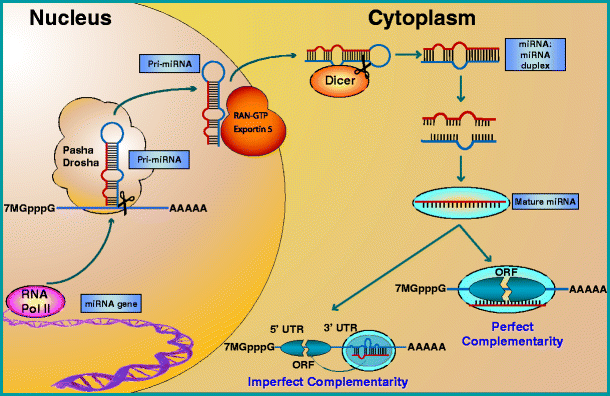MicroRNA-mediated drug resistance in breast cancer
- PMID: 21949547
- PMCID: PMC3156306
- DOI: 10.1007/s13148-011-0040-8
MicroRNA-mediated drug resistance in breast cancer
Abstract
Chemoresistance is one of the major hurdles to overcome for the successful treatment of breast cancer. At present, there are several mechanisms proposed to explain drug resistance to chemotherapeutic agents, including decreased intracellular drug concentrations, mediated by drug transporters and metabolic enzymes; impaired cellular responses that affect cell cycle arrest, apoptosis, and DNA repair; the induction of signaling pathways that promote the progression of cancer cell populations; perturbations in DNA methylation and histone modifications; and alterations in the availability of drug targets. Both genetic and epigenetic theories have been put forward to explain the mechanisms of drug resistance. Recently, a small non-coding class of RNAs, known as microRNAs, has been identified as master regulators of key genes implicated in mechanisms of chemoresistance. This article reviews the role of microRNAs in regulating chemoresistance and highlights potential therapeutic targets for reversing miRNA-mediated drug resistance. In the future, microRNA-based treatments, in combination with traditional chemotherapy, may be a new strategy for the clinical management of drug-resistant breast cancers.
Figures

References
-
- Aebi S, Kurdi-Haidar B, Gordon R, Cenni B, Zheng H, Fink D, Christen RD, Boland CR, Koi M, Fishel R, Howell SB. Loss of DNA mismatch repair in acquired resistance to cisplatin. Cancer Res. 1996;56:3087–3090. - PubMed
-
- Allen JD, van Dort SC, Buitelaar M, van Tellingen O, Schinkel AH. Mouse breast cancer resistance protein (Bcrp1/Abcg2) mediates etoposide resistance and transport, but etoposide oral availability is limited primarily by P-glycoprotein. Cancer Res. 2003;63:1339–1344. - PubMed
LinkOut - more resources
Full Text Sources
Other Literature Sources
